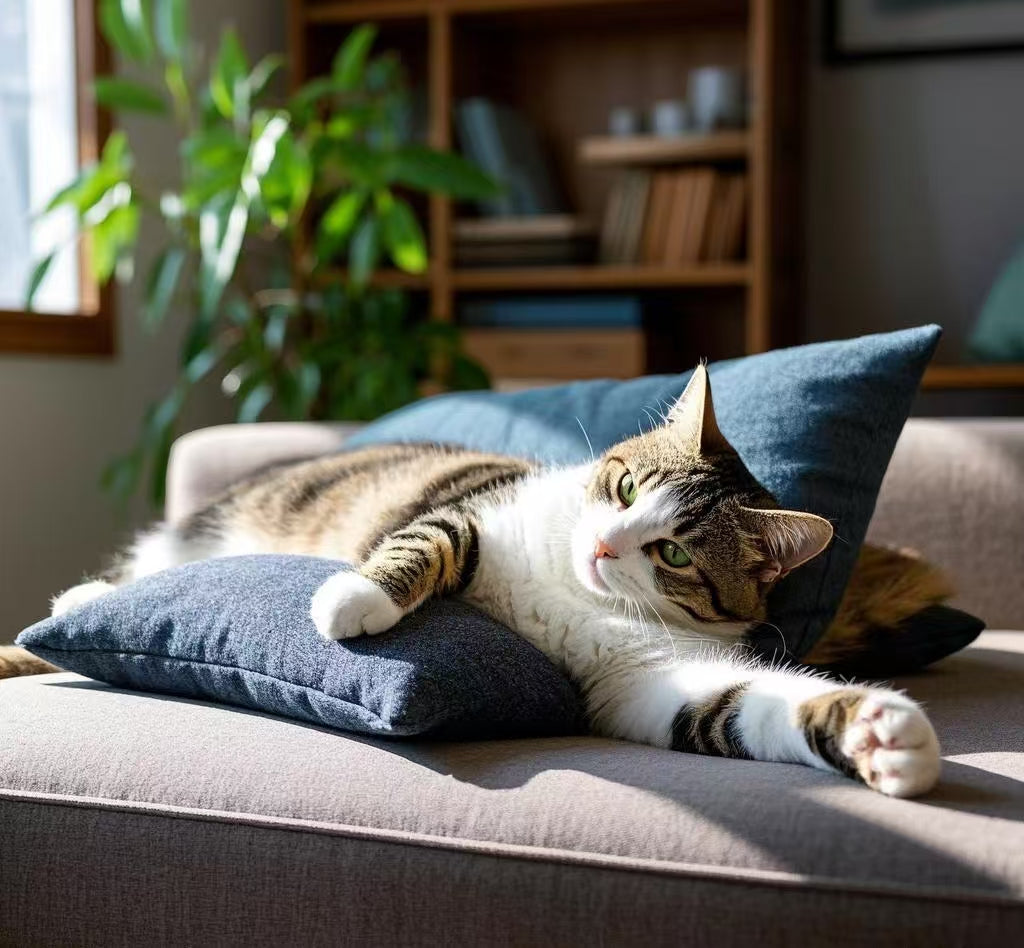Feline infectious peritonitis
This disease is a chronic and progressive infectious disease in cats caused by feline coronavirus. The disease is characterized by peritonitis, massive ascites accumulation, and a high mortality rate.
Cats of all ages can be infected. Cats aged 1 to 2 years old and older cats are most affected. Purebred cats have a higher incidence rate than ordinary domestic cats. The exact route of natural infection of this disease is not completely clear. It is generally believed that it can be transmitted through digestive tract infection or vector insects, or it can also be vertically infected in the fetus. Once a cat gets sick, the mortality rate is almost 100%.
[Main Symptoms] The symptoms are not obvious in the early stage of the disease. The sick cat gradually loses weight, has loss of appetite or intermittent anorexia, and is in weak body condition. Later, the body temperature rises to 39.7~41℃, showing persistent fever or relapsing fever, and the number of white blood cells in the blood increases. After 1 to 6 weeks, abdominal distension can be seen, which is generally painless to palpation and appears to contain fluid (female cats can often be mistaken for pregnancy). Sick cats have difficulty breathing, gradually become weak, may show symptoms of anemia, and eventually die quickly.
In some cases, when the eyes, central nervous system, kidneys and liver are invaded, there is almost no ascites. In eye infections, corneal edema and deposits may appear. When the central nervous system is damaged, symptoms include hindquarter movement disorders, movement disorders, and spasms; when the liver is damaged, jaundice may occur; when the kidneys are damaged, symptoms of progressive renal failure may occur.
Necropsy showed a large amount of fluid in the abdominal cavity of the sick cat, which was colorless, transparent, light yellow liquid or protein, and solidified when exposed to air. The peritoneum was cloudy and covered with fibrinoid exudate. Fibrin is also found attached to the surfaces of organs such as the liver, spleen, and kidneys. There are necrotic lesions on the liver surface, and some cases are accompanied by pleural effusion.
[Treatment] Currently, there are no effective specific drug treatments and effective vaccines available. Cats with clinical signs generally have a poor prognosis. In general, symptomatic therapy and combined traditional Chinese and Western medicine treatment are given.
Symptomatic treatment can be prednisone or combined with cyclophosphamide. Monitor for bone marrow suppression, renal dysfunction, and potassium abnormalities. Qingkailing can also be combined with Ganshu, Pishu, Shenshu and Sanjiaoshu injections, and Yinzhihuang injection (Yinchen extract 6g, Gardenia extract 3.2g, Scutellaria baicalensis 20g, Honeysuckle extract 4g) intravenously injection. You can also use 5g each of Artemisia and Gardenia, 3g each of Atractylodes, Poria, Polyporus, Alisma and Coix, and 2g of Akebia, decoction and take it for 7 days.
[Prevention] Pay attention to environmental hygiene, strictly implement epidemic prevention measures such as isolation and disinfection, and eliminate blood-sucking insects (such as lice, mosquitoes, flies, etc.) and mice and other transmission media. There is now a vaccine available abroad that can be safely administered through the nasal cavity. The vaccine is mainly recommended for use in cat farms, shelters and homes with many cats, where the disease is more likely to occur.

